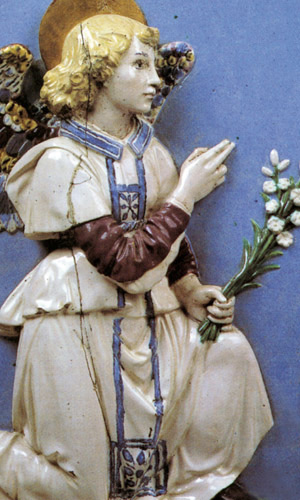 In 1471 Luca della Robbia bequeathed his successful factory to his nephew Simone. He didn’t trust Andrea (1435-1525), whom he believed too concentrated on getting the highest revenue from the family business.
In 1471 Luca della Robbia bequeathed his successful factory to his nephew Simone. He didn’t trust Andrea (1435-1525), whom he believed too concentrated on getting the highest revenue from the family business.
Actually, he was more or less right, if we consider that after his death Andrea massively increased the production of glazed terracotta. However the quality of the pieces did not suffer
much from it. At least in the beginning.
Andrea was a very good artist with a businessman approach to what he considered the family “company”: he increased the number of subjects so as to please both Catholic institutions and laical Customers who favored his glazed terra-cotta, that – if not cheaper than marble – was by far easier to ship and install.
